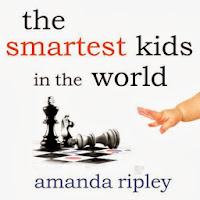In the book Ripley interviews American high school students about their experiences studying abroad as foreign exchange students. Ripley weaves these anecdotal observations into her research on different educational trends and practices. I have yet to read the book but the podcast was an interesting hour of audio which I offer up for your multitasking drive time or treadmill pleasure.
 |
| Sample infographic from OpenColleges |
On that note Edutopia had a nice piece from +Sarah Mulhern Gross (@thereadingzone on Twitter) about how students in her class create infographics sharing their reading histories. The article details the specific web tools her students use and she also provides samples of student work.
Before we part ways, just a few more notes. Next week I will be heading off to the New York State Association for Computers and Technology (NYSCATE)(#nyscate13) conference in Rochester along with a couple of teachers and administrators involved in the Virtual AP grant. I will be sure to share anything of note in next week's post.
Lastly, I was wondering if I could get some brief feedback from you regarding possible future professional development courses. I would like to build a few courses for our teachers but I wanted to gauge interest before beginning development.
If you have two minutes*, please fill out this Google form to let me know your interest in learning about four tools (Google Drive, Evernote, Infographics, and podcasts for personal/professional consumption) at possible future professional development workshops.
As always, thank you for reading and keep on keeping on.
___________________
*Seriously. Two minutes might be overestimating. The survey is five questions requiring quick clicks.



